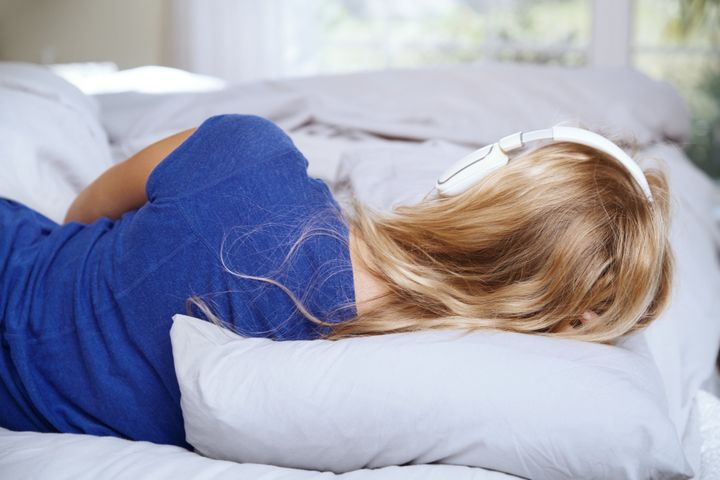
If you’re someone who struggles to fall asleep, you’ve probably tried every sleeping hack under the sun. Counting sheep? Done it. Drinking chamomile tea right before you fall asleep? Tried that. Exercising before bed to make yourself tired? Completed it.
Almost 1 in 5 people in the UK aren’t getting enough sleep and we know that this can have serious physical and mental health impacts.
But could a new TikTok colour noise trend solve your problems? You’ve probably heard of white noise, but there are many other types of ‘coloured noise’ - all with different benefits to help you get that good night’s sleep.
Coloured noise is a random sound signal playing at a constant spectral frequency. There are many different types, and each colour of noise has a particular density. The three main types are outlined below:
TikTok users are discovering the benefits different coloured noise. #pinknoise and #brownnoise videos being viewed over 90 million times on the platform – and counting.
Background noise can aid sleep by masking exterior sounds that you can’t control, like traffic or talking. It can also help distract the mind from anxious or intrusive thoughts that can keep you up at night
Behavioural science expert, James Picken at Startle explains how coloured noise could be the solution getting that perfect 8-hour sleep.
White noise
White noise is the most well-known coloured noise. It contains all audible frequencies in the sound spectrum at equal intensity and mixes them to create a steady, humming sound. It may be perceived as high-pitched because the human ear hears high frequencies louder.
Examples include a fan, radio or TV static, and air conditioning. Studies have shown white noise can improve sleep quality and duration and can be particularly beneficial in high-noise environments like cities.
Pink noise
Like white noise, pink noise is a steady background hum. The key difference to white noise is that it uses deeper sounds and lower sound waves, making it smoother and more relaxing.
Since higher frequencies are perceived louder, the energy levels of pink noise drop by three decibels per ascending octave so that each octave is perceived evenly. The result is a more even, flat sound, like falling rain, rustling leaves, or ocean waves. Many people find it the better choice for sleep and concentration.
Brown noise
Brown noise, also known as red noise, creates a rumbling sound with a bass-like tone even deeper than pink noise. Sound level decreases as frequency increases.
Some sleep apps use this sound instead of pink noise to give it a deeper, grainier effect. Studies have shown that many sufferers of Tinnitus (ringing in the ears) prefer the softness of brown noise for treating their symptoms. It’s also shown to enhance your thinking skills, so next time you need to focus, give it a go.
There are various other coloured noises, including violet (high frequency), blue noise (all treble and no bass), grey noise (a more balanced take on white noise, emitting noise at both high and low frequencies), and green noise, focusing on the mid frequencies found in nature.